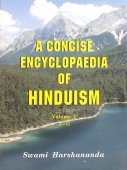Cittavritti, Cittavṛtti, Citta-vritti: 14 definitions
Introduction:
Cittavritti means something in Hinduism, Sanskrit, Marathi. If you want to know the exact meaning, history, etymology or English translation of this term then check out the descriptions on this page. Add your comment or reference to a book if you want to contribute to this summary article.
The Sanskrit term Cittavṛtti can be transliterated into English as Cittavrtti or Cittavritti, using the IAST transliteration scheme (?).
Alternative spellings of this word include Chittavritti.
In Hinduism
Natyashastra (theatrics and dramaturgy)
Source: Shodhganga: Elements of Art and Architecture in the Trtiyakhanda of the Visnudharmottarapurana (natya)Cittavṛtti (चित्तवृत्ति) refers to the “state of mind or feeling” (in Sanskrit Drama), according to the Viṣṇudharmottarapurāṇa, an ancient Sanskrit text which (being encyclopedic in nature) deals with a variety of cultural topics such as arts, architecture, music, grammar and astronomy.—When the inner ideas of a dramatist are expressed by means of words, gestures, facial expressions and the representation of sattva, those are called bhāvas. In the Abhinavabhārati commentary, the word bhāva and sattva are established by Abhinavagupta in a similar sense through the term cittavṛtti i.e., the state of mind or feeling.—(Cf. Sātvikābhinaya)

Natyashastra (नाट्यशास्त्र, nāṭyaśāstra) refers to both the ancient Indian tradition (shastra) of performing arts, (natya—theatrics, drama, dance, music), as well as the name of a Sanskrit work dealing with these subjects. It also teaches the rules for composing Dramatic plays (nataka), construction and performance of Theater, and Poetic works (kavya).
Yoga (school of philosophy)
Source: ORA: Amanaska (king of all yogas): A Critical Edition and Annotated Translation by Jason BirchCittavṛtti (चित्तवृत्ति) refers to the “activity of one’s mind”, according to the Amanaska Yoga treatise dealing with meditation, absorption, yogic powers and liberation.—Accordingly, as Īśvara says to Vāmadeva: “[...] [Now], I shall define the nature of that highest, mind-free absorption which arises for those devoted to constant practice. [...] By means of an absorption for a day and night, the Yogin who is steady in his seated posture knows smells from afar, because of the cessation of the activity of his mind (cittavṛtti). [...]”.

Yoga is originally considered a branch of Hindu philosophy (astika), but both ancient and modern Yoga combine the physical, mental and spiritual. Yoga teaches various physical techniques also known as āsanas (postures), used for various purposes (eg., meditation, contemplation, relaxation).
Languages of India and abroad
Marathi-English dictionary
Source: DDSA: The Molesworth Marathi and English Dictionarycittavṛtti (चित्तवृत्ति).—f (S) The mind; the attention. Ex. ci0 ṭhikāṇīṃ nāhīṃ-phiralī-badalalī-uḍūna gēlī. 2 pl The vagaries, rovings, fancies, soarings of the mind. Ex. ci0 ghaṭakēghaṭakēnta pālaṭatāta.
Source: DDSA: The Aryabhusan school dictionary, Marathi-Englishcittavṛtti (चित्तवृत्ति).—f The mind; the attention.
Marathi is an Indo-European language having over 70 million native speakers people in (predominantly) Maharashtra India. Marathi, like many other Indo-Aryan languages, evolved from early forms of Prakrit, which itself is a subset of Sanskrit, one of the most ancient languages of the world.
Sanskrit dictionary
Source: DDSA: The practical Sanskrit-English dictionaryCittavṛtti (चित्तवृत्ति).—f.
1) disposition or state of the mind, inclination, feeling; एवमात्माभिप्रायसंभावितेष्टजन- चित्तवृत्तिः प्रार्थयिता विडम्ब्यते (evamātmābhiprāyasaṃbhāviteṣṭajana- cittavṛttiḥ prārthayitā viḍambyate) Ś.2.
2) thinking, imagining.
3) inward purpose, emotion.
4) (in Yoga phil.) inward working of the mind, mental vision; योगश्चित्तवृत्ति- निरोधः (yogaścittavṛtti- nirodhaḥ) Yoga S.
Derivable forms: cittavṛttiḥ (चित्तवृत्तिः).
Cittavṛtti is a Sanskrit compound consisting of the terms citta and vṛtti (वृत्ति).
Source: Cologne Digital Sanskrit Dictionaries: Shabda-Sagara Sanskrit-English DictionaryCittavṛtti (चित्तवृत्ति).—f.
(-ttiḥ) Inward purpose, feeling, emotion. E. citta and vṛtti being.
Source: Cologne Digital Sanskrit Dictionaries: Benfey Sanskrit-English DictionaryCittavṛtti (चित्तवृत्ति).—f. 1. feeling, sentiments, [Śākuntala, (ed. Böhtlingk.)] 4, 11; [Ṛtusaṃhāra] 6, 26. 2. thinking, thought, [Vedāntasāra, (in my Chrestomathy.)] in
Cittavṛtti is a Sanskrit compound consisting of the terms citta and vṛtti (वृत्ति).
Source: Cologne Digital Sanskrit Dictionaries: Cappeller Sanskrit-English DictionaryCittavṛtti (चित्तवृत्ति).—[feminine] condition of the mind, sentiment.
Source: Cologne Digital Sanskrit Dictionaries: Monier-Williams Sanskrit-English Dictionary1) Cittavṛtti (चित्तवृत्ति):—[=citta-vṛtti] [from citta > cit] f. state of mind, feeling, emotion, [Śakuntalā; Pañcatantra; Ṛtusaṃhāra; Kathāsaritsāgara]
2) [v.s. ...] continuous course of thoughts (opposed to concentration), thinking, imagining, [Yoga-sūtra i, 2; Bharata-nāṭya-śāstra; Naiṣadha-carita viii, 47; Sarvadarśana-saṃgraha; Hitopadeśa]
3) [v.s. ...] disposition of soul, [Vedāntasāra]
Source: Cologne Digital Sanskrit Dictionaries: Yates Sanskrit-English DictionaryCittavṛtti (चित्तवृत्ति):—[citta-vṛtti] (ttiḥ) 2. f. Emotion.
[Sanskrit to German]
Sanskrit, also spelled संस्कृतम् (saṃskṛtam), is an ancient language of India commonly seen as the grandmother of the Indo-European language family (even English!). Closely allied with Prakrit and Pali, Sanskrit is more exhaustive in both grammar and terms and has the most extensive collection of literature in the world, greatly surpassing its sister-languages Greek and Latin.
Kannada-English dictionary
Source: Alar: Kannada-English corpusCittavṛtti (ಚಿತ್ತವೃತ್ತಿ):—[noun] the normal, natural function or functions of the mind including inclinations, tendencies, etc.
Kannada is a Dravidian language (as opposed to the Indo-European language family) mainly spoken in the southwestern region of India.
See also (Relevant definitions)
Partial matches: Vritti, Citta.
Starts with: Cittavrittikalyana.
Ends with: Dolacalacittavritti, Dolikacalacittavritti.
Full-text: Cittavirutti, Dolacalacittavritti, Cidvritti, Activity of the mind, Yoga, Ratanem, Cala, Klishta, Satvika, Puratana, Satvikabhinaya.
Relevant text
Search found 32 books and stories containing Cittavritti, Cittavṛtti, Citta-vritti, Cittavrtti, Citta-vṛtti, Citta-vrtti; (plurals include: Cittavrittis, Cittavṛttis, vrittis, Cittavrttis, vṛttis, vrttis). You can also click to the full overview containing English textual excerpts. Below are direct links for the most relevant articles:
Jainism and Patanjali Yoga (Comparative Study) (by Deepak bagadia)
Part 4.4 - Yogic techniques for control of Vrttis (5): Isvara-pranidhana < [Chapter 2 - Yoga philosophy and practices]
Part 12 - Similarities and differences of both the Philosophies in Nutshell < [Chapter 4 - A Comparative Study]
Part 4.3 - Cittavrtti (Modifications of mind) < [Chapter 2 - Yoga philosophy and practices]
Yoga-sutras (Ancient and Modern Interpretations) (by Makarand Gopal Newalkar)
Sūtra 1.4 [Cittavṛttis] < [Book I - Samādhi-pāda]
Sūtra 2.43 < [Book II - Sādhana-pāda]
Sūtra 2.21 < [Book II - Sādhana-pāda]
Brihad Bhagavatamrita (commentary) (by Śrī Śrīmad Bhaktivedānta Nārāyana Gosvāmī Mahārāja)
Verse 1.7.83 < [Chapter 7 - Pūrṇa (pinnacle of excellent devotees)]
Verse 1.7.122 < [Chapter 7 - Pūrṇa (pinnacle of excellent devotees)]
Verse 2.2.103-105 < [Chapter 2 - Jñāna (knowledge)]
Chaitanya Bhagavata (by Bhumipati Dāsa)
Verse 1.7.72 < [Chapter 7 - Śrī Viśvarūpa Takes Sannyāsa]
Verse 2.23 < [Chapter 2 - The Lord’s Manifestation at the House of Śrīvāsa and the Inauguration of Saṅkīrtana]
Verse 2.1.245 < [Chapter 1 - The Beginning of the Lord’s Manifestation and His Instructions on Kṛṣṇa-saṅkīrtana]
Mimamsa interpretation of Vedic Injunctions (Vidhi) (by Shreebas Debnath)
Chapter 9.3k - According to the ‘Saṃkṣepaśārīraka’
Srila Gurudeva (The Supreme Treasure) (by Swami Bhaktivedanta Madhava Maharaja)
Rāga-vartma-candrika < [Chapter 2.12 - Early ISKCON Conversations with Śrīla Gurudeva]
Related products
